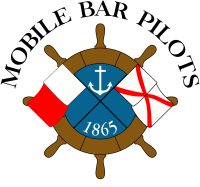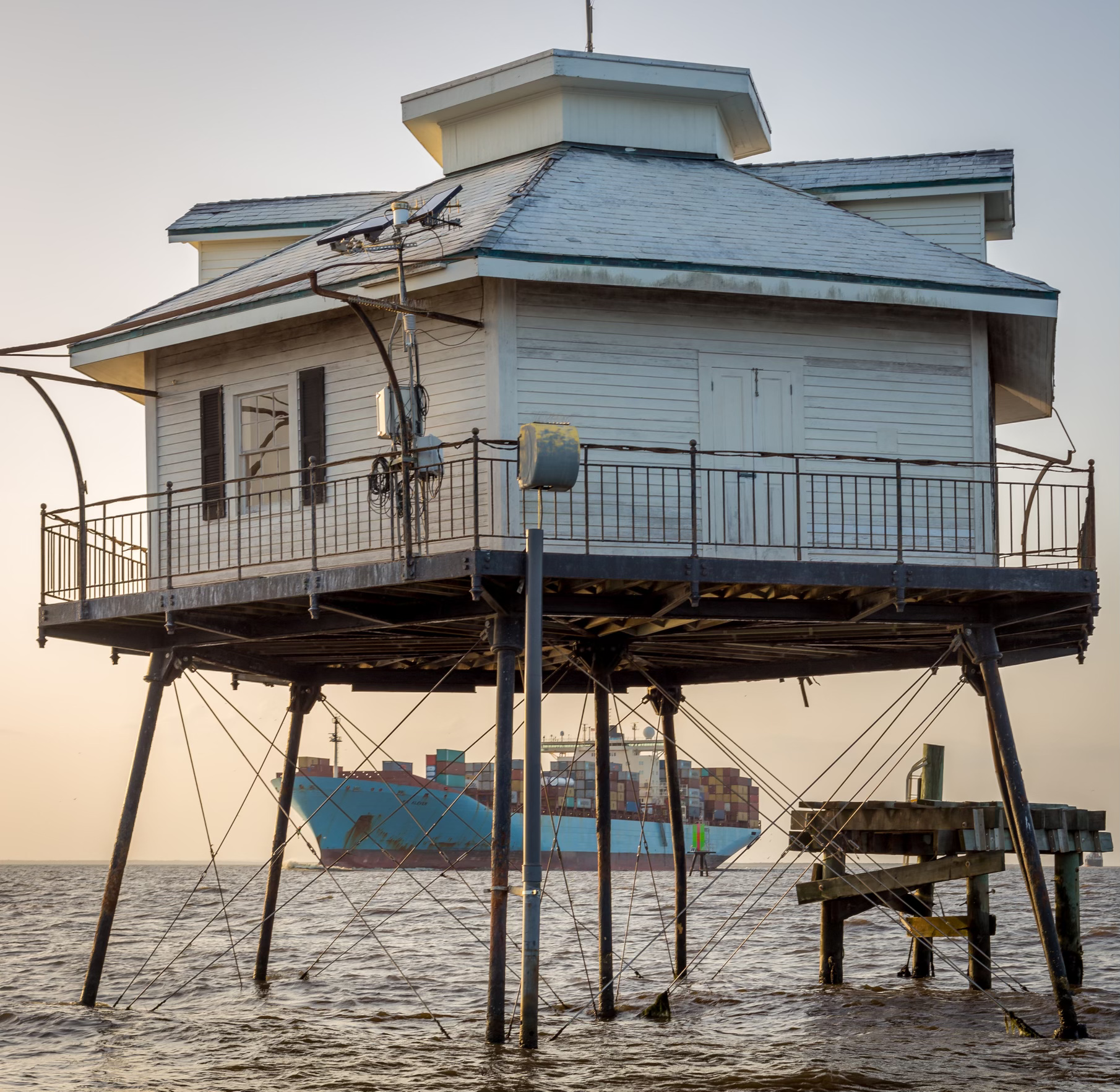The first permanent Mobile Bar Pilot was appointed by the King of France in the year 1711. Pilots have navigated ships over the Mobile (sand) Bar ever since. Shortly after Mobile was occupied by American troops during the War of 1812, the first American pilots were licensed. These men lived at a community located on Navy Cove known as Pilot Town . At first, the pilots worked independent of each other. They maintained a lookout; scanning the horizon for ships. When a sail was spotted, the pilots would race each other to the ship. The pilot with the fastest boat won the job. Once onboard, the pilot would navigate the ship over the Mobile Bar to a position four miles northwest of Mobile Point known as the Lower Fleet Anchorage. The anchorage had to be used because the mouth of the Mobile River was too shallow for ocean-going ships. At the anchorage the ships would transfer cargo to or from small light draft vessels that could transit the upper bay.
In the year 1831, Choctaw Pass at the mouth of the Mobile River was dredged to a depth of ten feet. Smaller ocean- going ships could now berth at the docks in the city. A second pilotage system soon developed. The Bar Pilots would navigate the ships into the bay, and the Upper Bay Pilots would guide the ships to Mobile . By the 1840’s, the races from Pilot Town had ended. The pilots realized that it was more efficient to stay out in the gulf and wait for a vessel than to stay in port. There was one problem, maintaining a boat big enough to handle the rough weather in the open sea was expensive. In 1843 four bar pilots found a solution. They formed a consortium and purchased a large pilot boat and took turns with the jobs. Within a decade four other consortiums had formed to operate on the Bar, meanwhile the Upper Bay pilots joined together to form one association.
When the War Between the States broke out in 1861, there were sixteen bar pilots and seven upper bay pilots working. Many of the pilot boats were used as blockade runners during the war. In fact, two of the bar pilots were captured and imprisoned for attempting to run the blockade. By the time the war ended in 1865, all of the prewar pilot boats had either been captured or scuttled during the conflict. The sixteen bar pilots joined forces and formed the Mobile Bar Pilots Association. They purchased two pilot boats. Pilot No.1 was stationed at the sea buoy, and Pilot No. 2 was stationed in the lower bay. The upper bay pilots also bought a new boat for their station in the bay.
During the war, Confederate forces defending Mobile placed numerous obstructions in the bay which limited access to the city and the port languished. In 1870, congress authorized the first of many improvements to the port. The obstructions were removed, three lighthouses were built, and by 1876 the ship channel was dredged to a depth of thirteen feet. This was still too shallow for modern ocean-going steam freighters, so the anchorage was still used. In 1896, the channel was dredged to a depth of twenty-three feet. Finally the need to lighter the ships at the anchorage had ended. That year the bar pilots and the upper bay pilots merged and formed the Mobile Bar and Bay Pilots Association. Because of tradition, the pilots still used the system of changing out pilots in the lower bay. It was deemed a better job to pilot the ships from the bay to the port, so the nine senior pilots became town pilots and the junior pilots served as bar pilots. Many of the pilots still maintained a house at Pilot Town , but that would soon change. In 1906, a hurricane destroyed Pilot Town and it was never rebuilt.
The Alabama Legislature authorized the building of the Alabama State Docks in 1923. Until that time, the port was a mixture of private and city owned docks. Modernization was needed, and only the state had the necessary capital available to do the job. The Seaport Act of 1927 placed the Mobile Bar and Bay Pilots Association under the jurisdiction of the Alabama State Docks Commission. The commission decided to put the pilots on a paid salary. The next year the No.2 pilot boat was destroyed in a storm. Because the pilots were on a salary, they did not have the money to replace the boat. This forced a change in the pilots work schedule. Now only one pilot was used to make the full transit of the bay. After much lobbying, the legislature removed the pilots from the jurisdiction of the State Docks. On March 9, 1931 the twenty-two pilots met at the Master, Mate, and Pilots Union Hall and formed the modern Mobile Bar Pilots Association.
Because ships were now only using one pilot to reach port, the Association had too many pilots. The pilots decided not to replace retiring pilots and their number gradually declined to fifteen. During World War II, the pilots were given commissions as officers in the U.S. Coast Guard Reserve. Shortly after the war, the masts were removed from the pilot boat Alabama . The old sailboat was now kept at anchor at the sea buoy. Because of improved communications, staying at the sea buoy was unnecessary. The organization looked for a new way to station the pilots. On September 15, 1965 the pilots opened their new pilot station on Dauphin Island and the old wooden sailing vessel Alabama was retired. Today the pilots still operate out of Dauphin Island . Two launches are stationed there to ferry pilots to and from the ships. The only change since 1965 is our name. We became the Mobile Bar Pilots, LLC in 1997.

